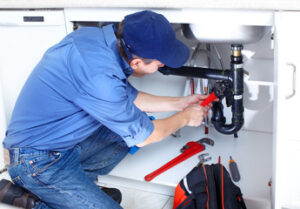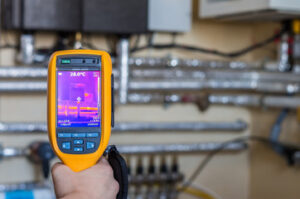Plumber Linden NJ is a skilled professional who installs and repairs pipes, fixtures, and appliances. Their work requires precise measurements and connections and must adhere to local building codes.

Many plumbers attend vocational or trade schools to obtain the necessary skills and knowledge for their careers. They then enter into an apprenticeship to gain on-the-job experience and training.
The valve seat is a critical component that must be designed, machined and applied with the utmost care and precision to perform its function properly. Its duties include a tight seal between the valve seat and the valve stem and an ability to withstand a variety of operating conditions such as high pressure, temperature extremes and combinations of both. To accomplish these tasks, the valve seat must be made of a material that is tough enough to resist deformation and erosion and must have a good surface for seating the valve stem.
Traditionally, the valve seat was formed by first press-fitting an approximately cylindrical piece of a hardened metal alloy such as Stellite into a cast depression in the cylinder head above each eventual valve stem position. Then, the seat was machined with a conical-section surface that would mate with the corresponding conical section of the valve stem. This technique was not without problems. It could cause a hard spot at the seat/valve stem interface that was susceptible to cracking or extrusion under high valve head vacuum or compression, and it also required regular inspection and maintenance.
Today, engine rebuilders have a much broader selection of materials from which to choose when designing and cutting a valve seat. Some of these materials are designed for specific applications while others are suitable for use in a wide range of performance engines. It is important to understand the physical characteristics of these different materials before choosing one for a particular application.
A common cause of broken valve seats is using an improper seat material for a given application. Choosing the wrong material can lead to damage to the valve seat, valve stem or both.
There are many techniques available for repairing damaged valve seats, including TIG welding and remachining the counterbore to accept a new seat insert. If the counterbore is enlarged to accommodate an oversized valve seat, it is important to correct the runout of the counterbore and its concentricity with the valve guide in order to ensure proper heat transfer between the valve seat and the head.
Handle
Whether the handle is leaking or just worn from repeated use it may be time for an upgrade. The flushometer may be able to hold it but its a good idea to replace the handle assembly. Its a cheap fix and it will give you a new flush. If yours is leaking the seals need replacing and you can get them in kit #49815 (Sloan parts A-31 and B-39). Its also a good idea to dress the shank of the handle so it can go deeper into the tool. Saw it with a hacksaw or just sand it so the wedge slot is a little deeper. Its a good idea to cut a piece of fine grained wood (old handle works well) to make a replacement wedge. This should be long enough to stick out of the tool a couple inches and thicker than the original. While the handle is out of the tool dress the edges of the eye hole a little too. These often have sharp corners that scrape or cut the handle when it is installed.
The handle should be wiped down and sanded to remove dirt. If it is nicking or cracked a few wraps of plastic electrical tape will help protect from further damage. If the cracks are deep they can be glued with wood glue. Once dry the handle can be re-attached to the tool and whack with a BFH (Big F*cking Hammer) a few times to set it. A piece of duct tape can be added along the top of the handle for a few inches to prevent it from being hit too hard.
Plumbers interpret blueprints and building codes to plan plumbing installations, and they install and connect pipes, fixtures, and appliances like sinks, toilets, water heaters, and irrigation systems. They also repair existing plumbing systems and diagnose problems like leaks or clogs. They work with other professionals, such as architects and construction teams, to ensure that all aspects of a project are completed on schedule and within budget.
Cylinder
A cylinder is a geometric shape with two parallel circular bases that overlap each other. A line segment joining the centers of the bases is called an axis and defines the height of the cylinder. The cylinder is different from cones, cubes and a cuboid in that it does not have any vertices. The cylinder’s top and side views look similar to a circle and rectangle, respectively.
Cylinder repair is a complicated process that should be left to professionals with specialized hydraulics experience. The first step involves careful disassembly of the cylinder using specialized tools to prevent damage. Cylinders are often pressurized, so it’s important to ensure the cylinder is not under pressure when it’s being removed from the system.
Next, the cylinder is thoroughly cleaned to remove all debris and dirt that could interfere with the reassembling process. Once the cylinder is disassembled, a technician should replace all internal and external seals. They should also replace any damaged or worn parts. The technician should make sure the cylinder is properly sized and that all o-rings are evenly installed.
Once all the parts are replaced, the cylinder can be tested to make sure it’s functioning correctly. A cylinder action tester simulates the cylinder’s operation and delivers real-time performance data. During this test, the technician will also verify that the piston rod is in a proper position. This will be important for preventing premature wear and tear on the rod seal and extending the cylinder’s life.
The cylinder is also evaluated for signs of other problems, such as mushrooming and a loss of traceability. It’s essential to fix these issues before they lead to more expensive problems down the road. For example, the cylinder base can become permanently deformed if the piston seal is failing prematurely. This may indicate a more serious problem such as a shattered barrel tube or a loose weld.
In addition to replacing the seals and other parts, a plumber can also rebuild or repack the cylinder. This process includes tapping the head until it’s flush with the cylinder tube, then installing an o-ring dual seal on both the rod and the head. It’s also important to install the retaining ring properly so it snaps into place in the internal cylinder groove.
Seals
Seals are an important part of your plumbing system, but they can become damaged over time. When this happens, it is important to know how to fix them correctly. This will help prevent damage and save you money in the long run. Visible cracks and damages are an early warning sign that the seal needs to be repaired, so you should always keep an eye on them.
Mechanical seals are designed to function with two mating faces, which are usually made of a soft material such as carbon and a hard material such as silicon carbide. These mating faces are held together by a series of elastomers and bellows. The seal is then held in place by a gland of some sort.
The gland may be a sleeve, a flange, or an internal cylinder with a groove that seals onto the shaft. The type of gland you need will depend on the size and application of your mechanical seal. A good mechanical seal repair service will provide inspection, troubleshooting, disassembly, cleaning, refurbishing or replacement of seal components, lapping services, and failure analysis. It is also a good idea to have a professional perform these services if you are using a more expensive type of seal such as a diaphragm or a labyrinth seal.
Seals can be found worldwide, with some species preferring coastal waters while others inhabit islands, shores, or ice floes. They are carnivorous and feed on a variety of fish, squid, mollusks, and crustaceans. They are excellent swimmers and divers, with some species reaching depths of up to 230 feet.
Male seals are particularly aggressive during mating season, fighting with their peers to prove their dominance and win the attention of females. They use deep, throaty calls to attract females and warn other males of their territory. During this competition, males are often so engrossed in their task that they don’t even eat.
A harp seal has wishbone-shaped black ear markings on its silver-grey body and is five feet seven inches in length. It lives in warm subtropical and tropical seas around Hawaii. It has been known to dive for more than 73 minutes and preys on a wide range of ocean organisms.



